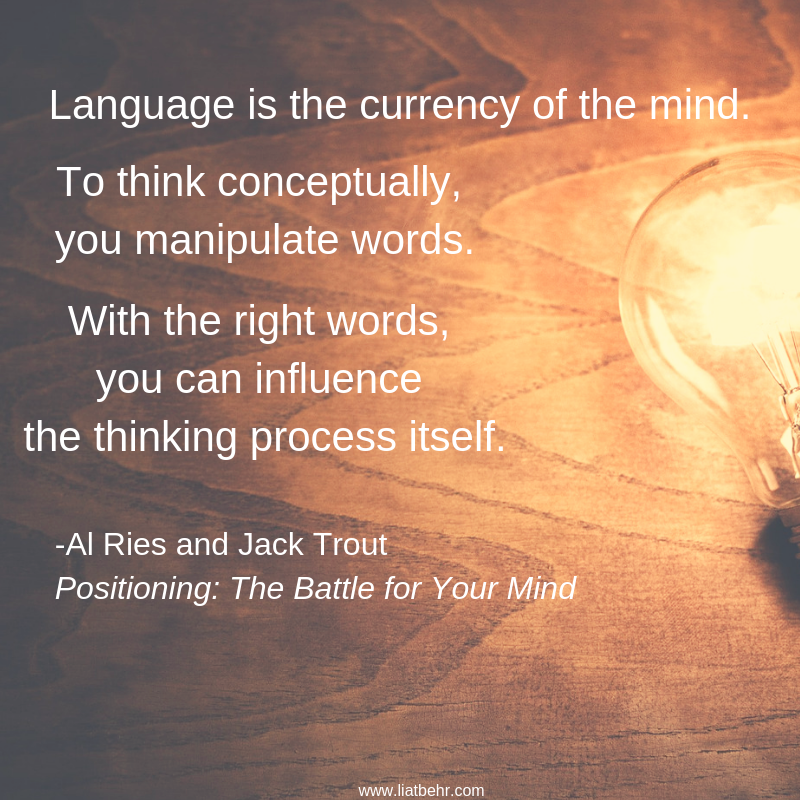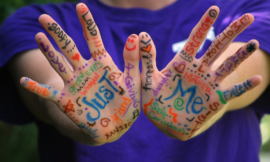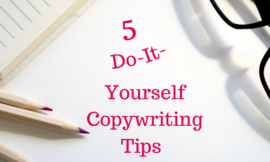Brand language is the voice your brand uses to communicate. It is made up of words that convey images and ideas that deeply connect with what your brand represents. Brand language is fundamentally important. It is made up of the words and images that will inspire your brand’s story, build curiosity, and establish trust. Ultimately, your brand language will help secure more business.
Having recently helped a client build their brand’s language for their upcoming launch, I’m excited to share my creative process. This process can work for any brand or product and the good news is that if you deeply understand your prospect, your brand and your competition, you can probably build your brand language yourself. However, bear in mind, that the key to success in building your brand language, is to first deeply understand your brand.
Distilling your brand’s values
If you’ve already done the hard work of understanding your brand, you should have a list of values your brand represents. Think deeply about each of these values. Now, from the entire list, choose just one. How will you decide which one? Choose the one that represents the most value for your customer and the one that best represents your brand; you’re looking for the value that is the lowest common denominator for both your target audience and your brand.
To make things a bit more concrete, let’s pretend you’re selling soap and that you’ve identified that the most important value to both your customer and your brand, is purity.
Now it’s time to expand
Once you’ve narrowed your brand’s value to just one, it’s time to expand and build your brand’s vocabulary.
Here are 5 questions to help you build your brand language:
1. What songs does your brand value bring to mind?
Using purity as an example, think of songs you know that contain the word pure (or purity). If nothing comes to mind google your favorite band and the word pure. See what comes up. Listen to the song and write down any word that forms an association in your mind.
2. What people (or characters from stories), animals and objects float to the top of your mind when you think about your brand value?
What people, characters, animals and objects come to mind when you think of the word purity? Don’t worry about them being right or wrong, just write them down.
3. What plants and smells come to mind when you think of your brand value?
Close your eyes and think that you’re in a garden. Think of the word purity. What plants and smells come to mind? Jot them down.
4. What does your brand value taste like?
In this case purity. Think of all the directions you can go in – if purity were a fruit, what fruit would it be? If it were an ice cream – what flavour ice cream? What dessert would it be? You get the idea.
If your brand value were a colour, what colour would it be?
If purity were a colour, what colour would it be? Think of a few options.
By now, you should have between 30 and 50 words on your list. It’s now time to pare your list down. Choose up to a maximum of twelve words. (If you’re still not satisfied with your list, no worries. Take the strongest words on your list and look them up in a thesaurus. Write down the words that you feel connect with your brand.)
You should now have a robust list of words. Notice, these words will help you connect in many ways. Use them to describe your products as well as create strong symbols and metaphors you can incorporate into your brand’s stories and messaging.
Using our example, purity, this was the list of words I came up with:
| easy | garden | green | desert | source |
| eternal | daisy | white | Sand | well |
| child | lily | gold | soil | rain |
| wilderness | baby’s breath | vanilla | earth | tide |
| dreams | dove | health | forest | river |
| water | cranes | simple | leaf | cold |
| ripples | mint | effortless | nature | |
| splash | clean | innocence | clean |
What about you? What words did you come up with? Do you feel confident that you can incorporate twelve of the words on your list into your brand’s story? Share your process in the comments below.


